Abstract
1. The occurrence of a novel series of triterpenoid carotenes in Streptococcus faecium UNH 564P is reported. 2. This series, which comprises the C30 analogues of phytoene, phytofluene, ζ-carotene, 7,8,11,12-tetrahydrolycopene and neurosporene, appears to be analogous to the C40 Porter–Lincoln series and a pathway of triterpenoid carotene dehydrogenation is proposed to account for the formation of these compounds. 3. Two cis isomers of the C30 analogue of neurosporene are described. 4. An appropriate system of nomenclature for these novel compounds is proposed.
Full text
PDF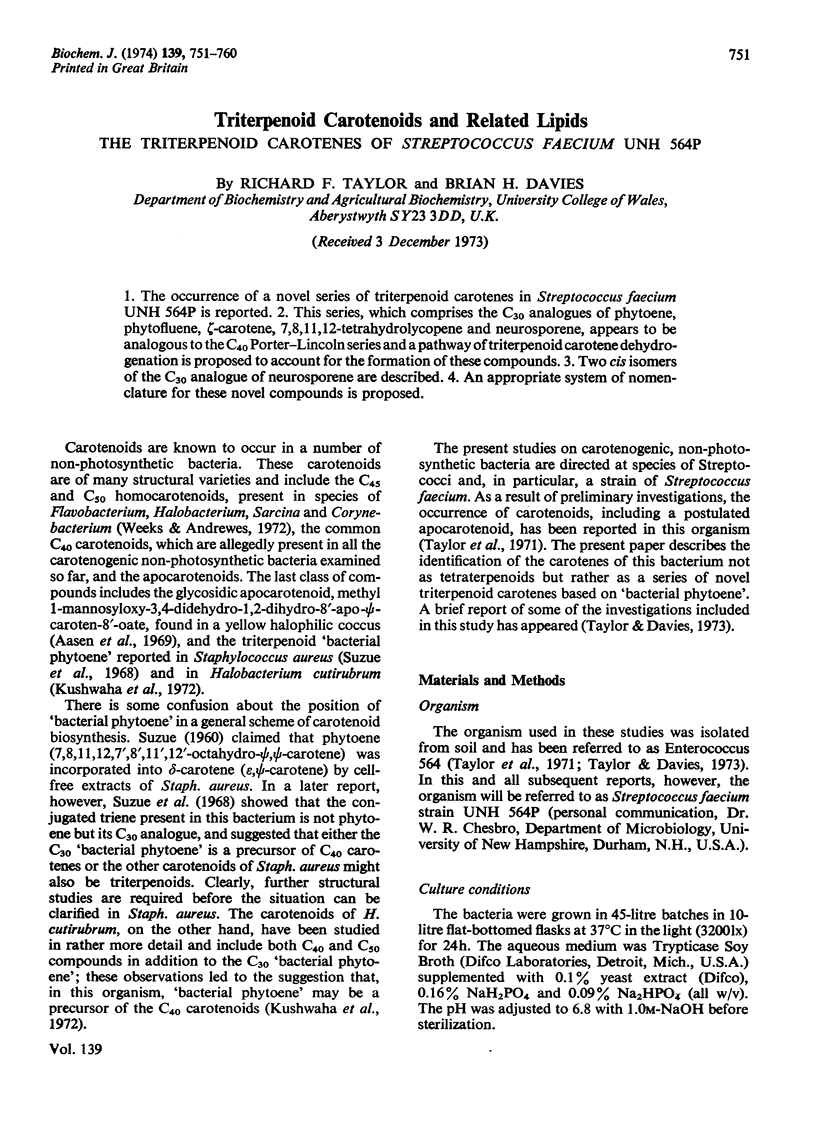
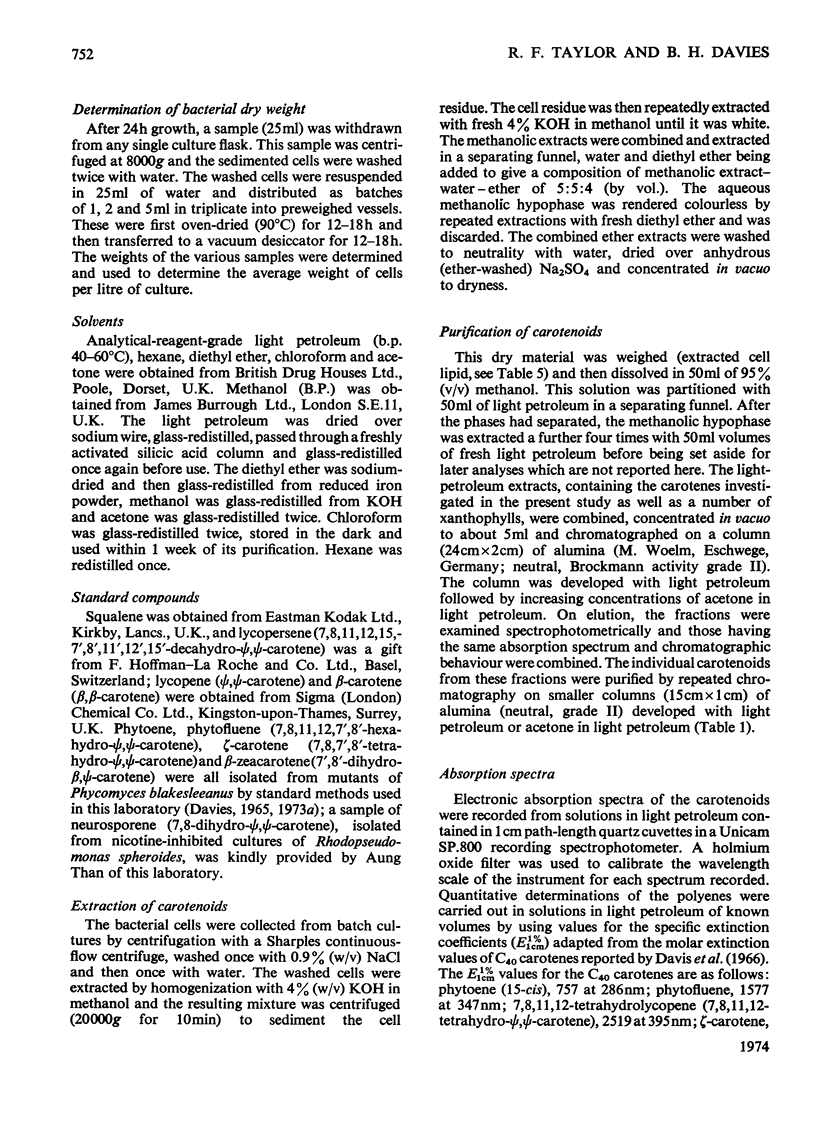
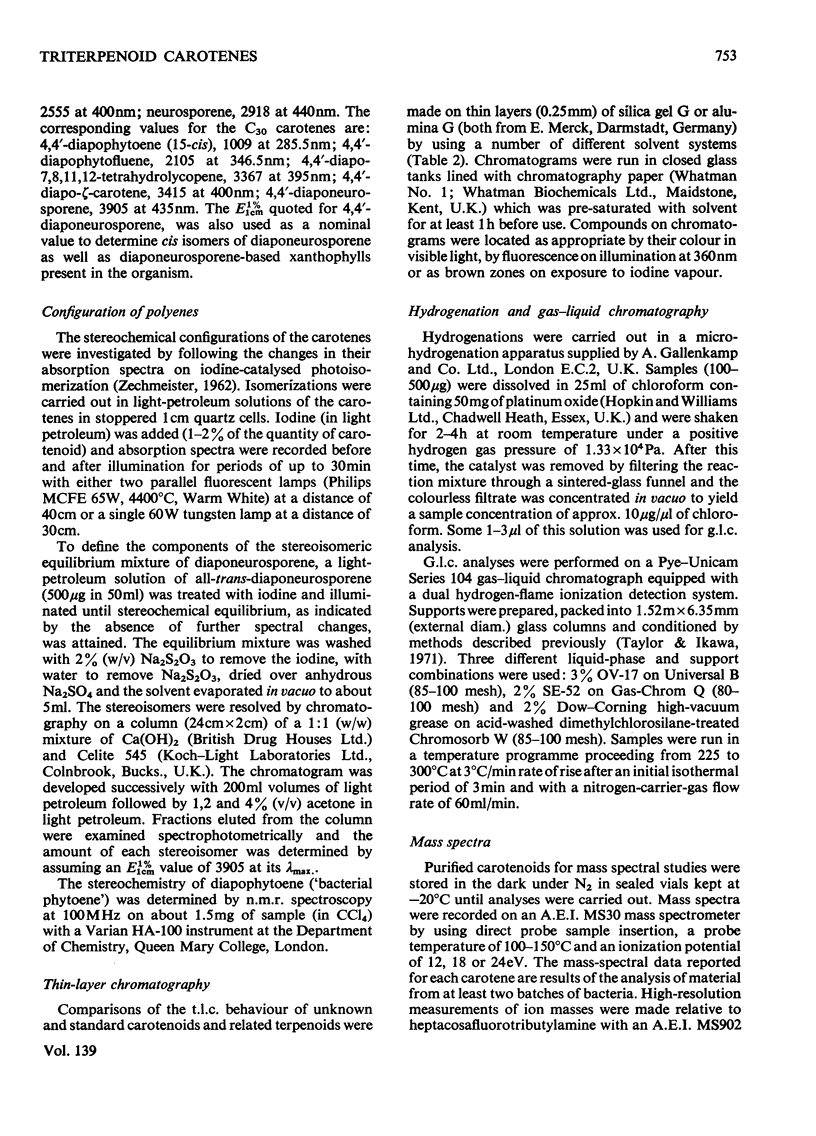
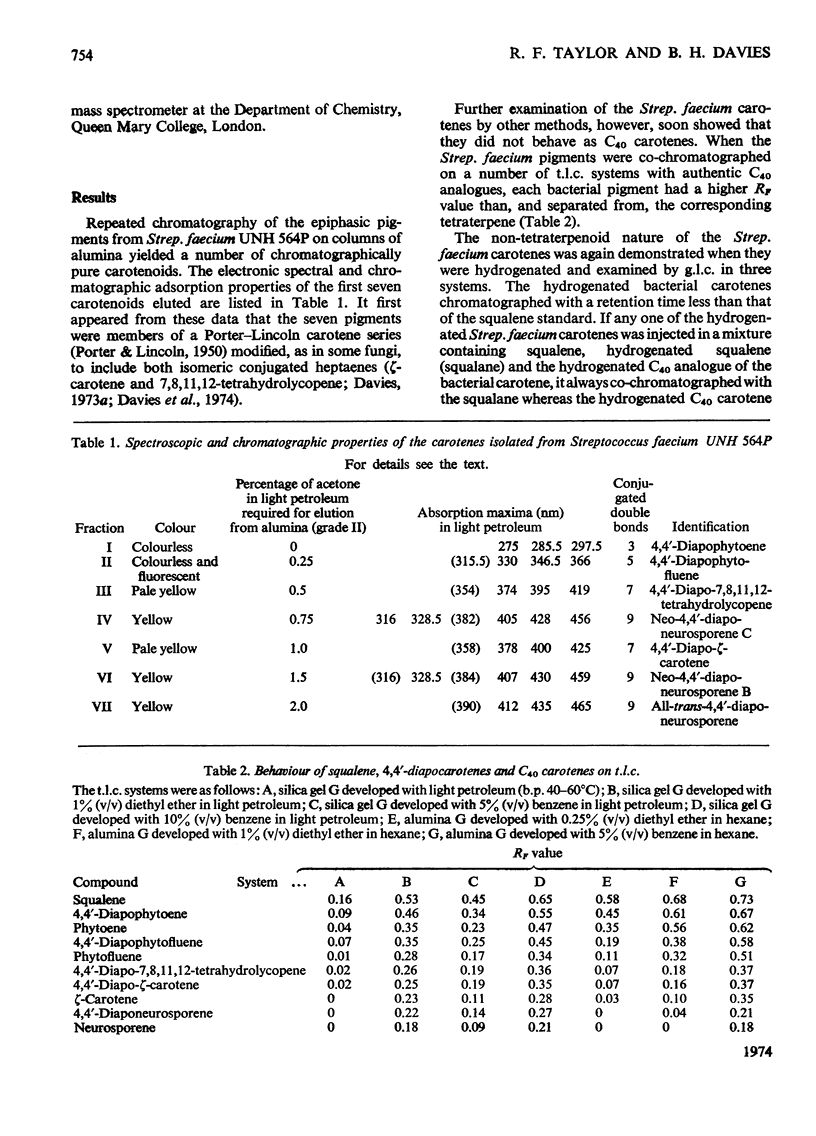
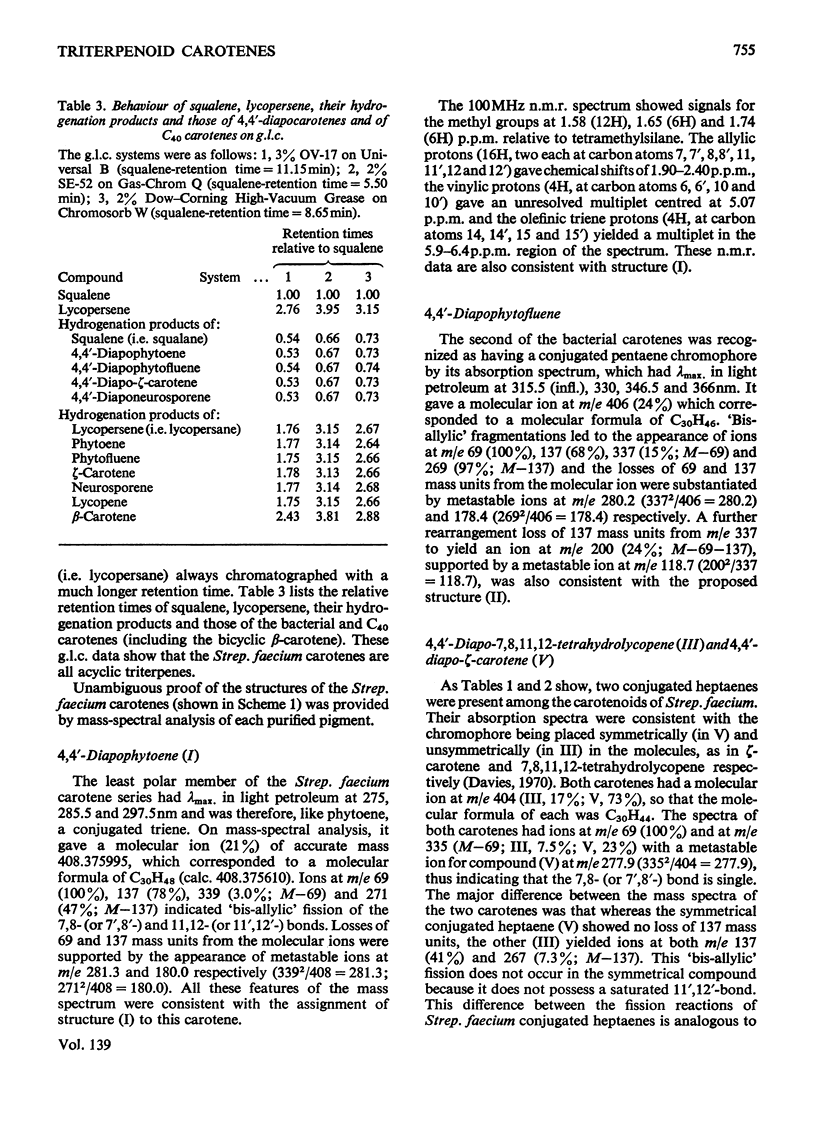
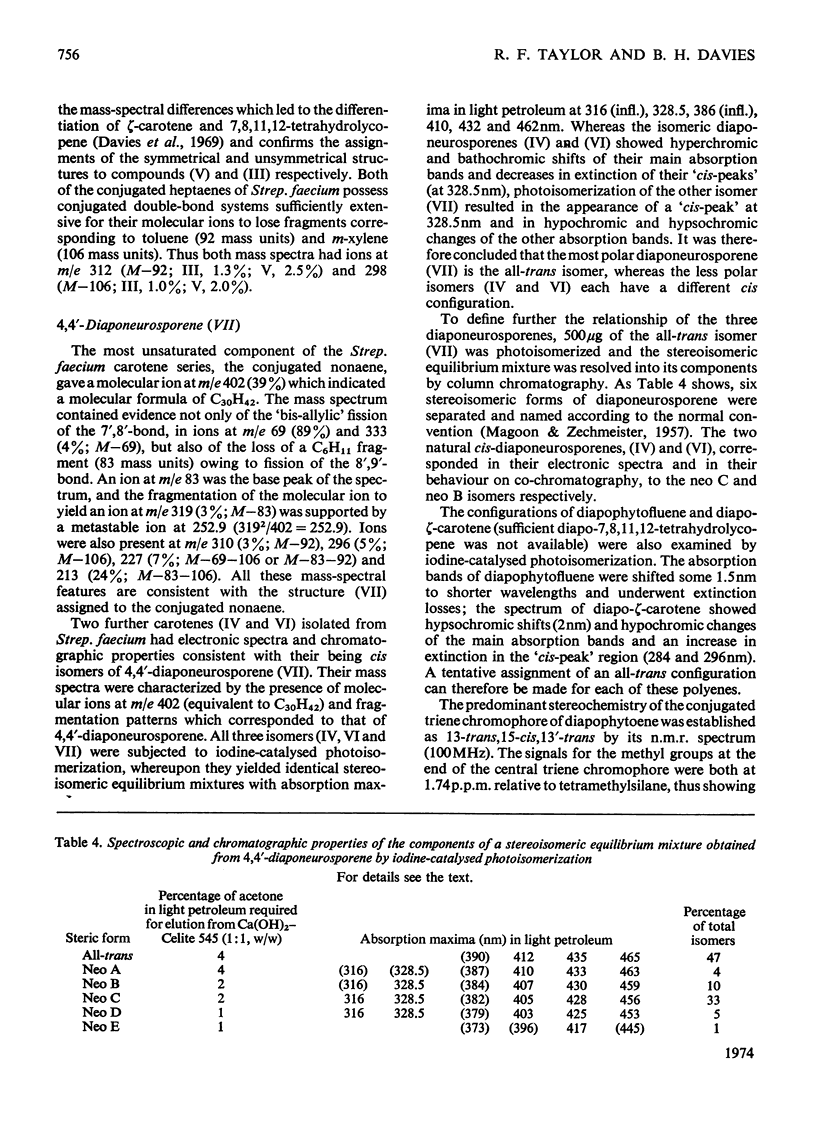
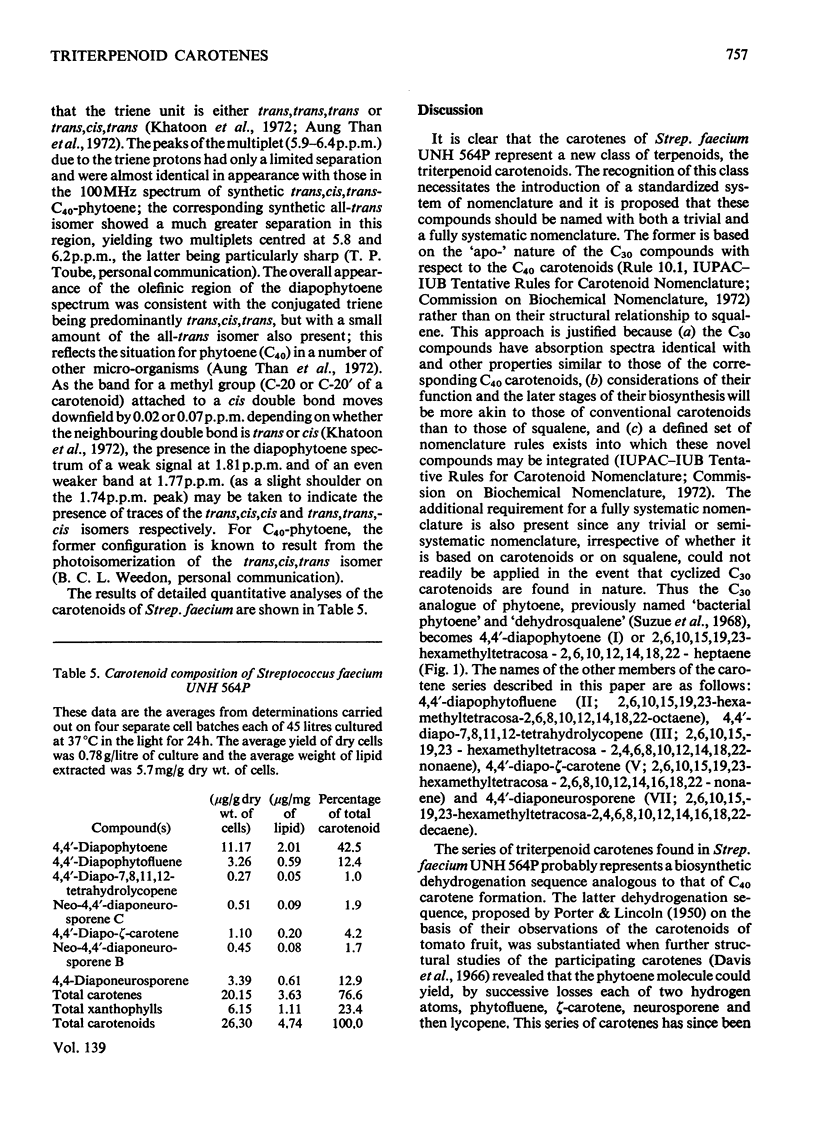
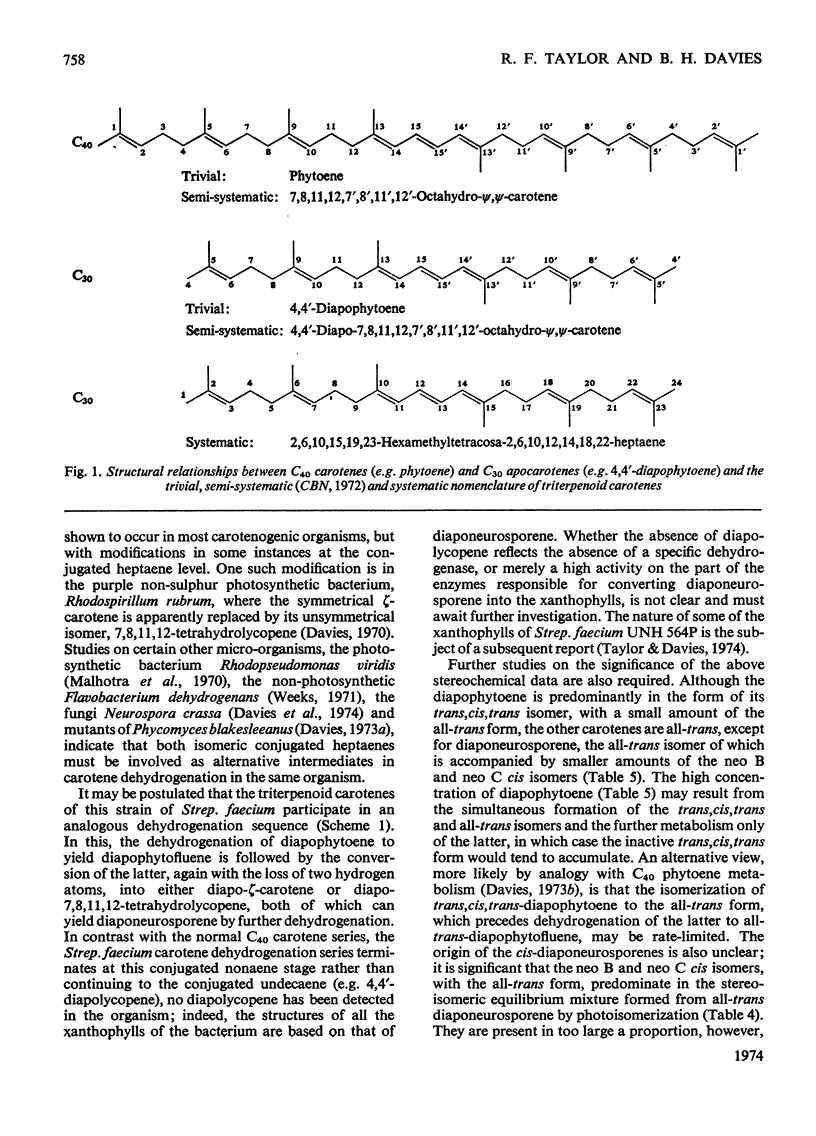
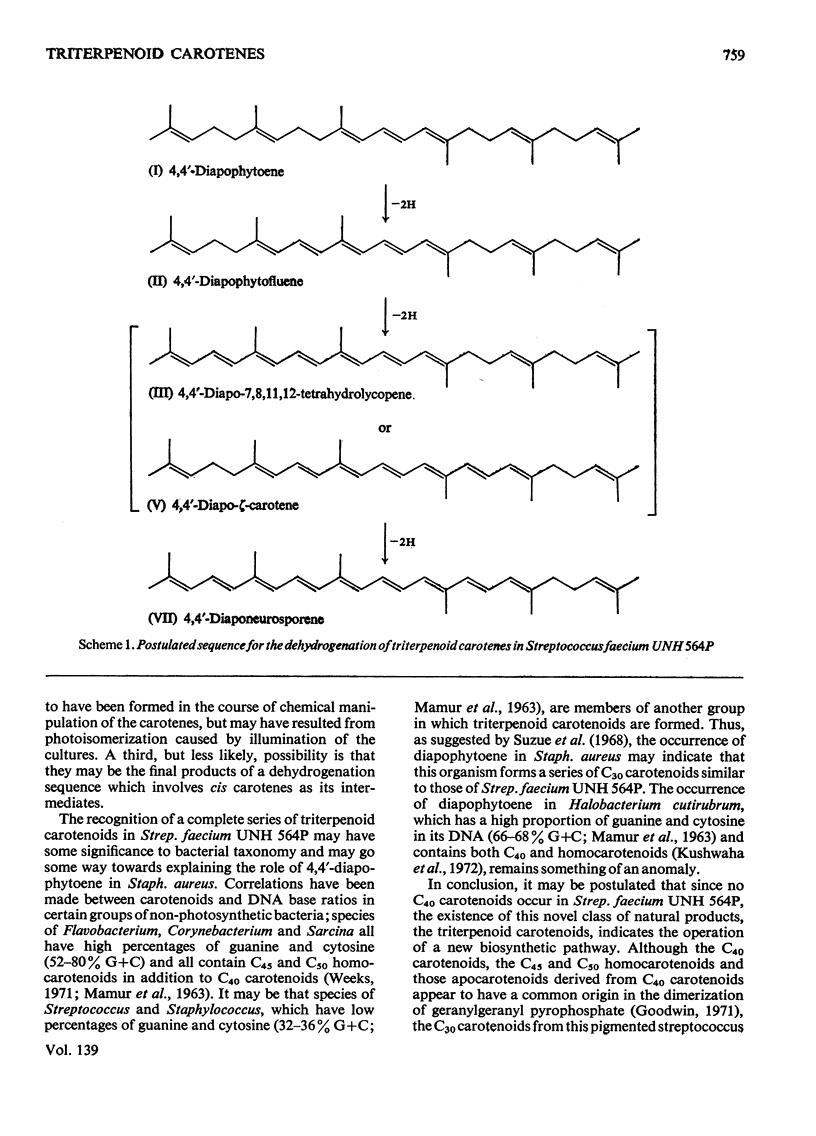
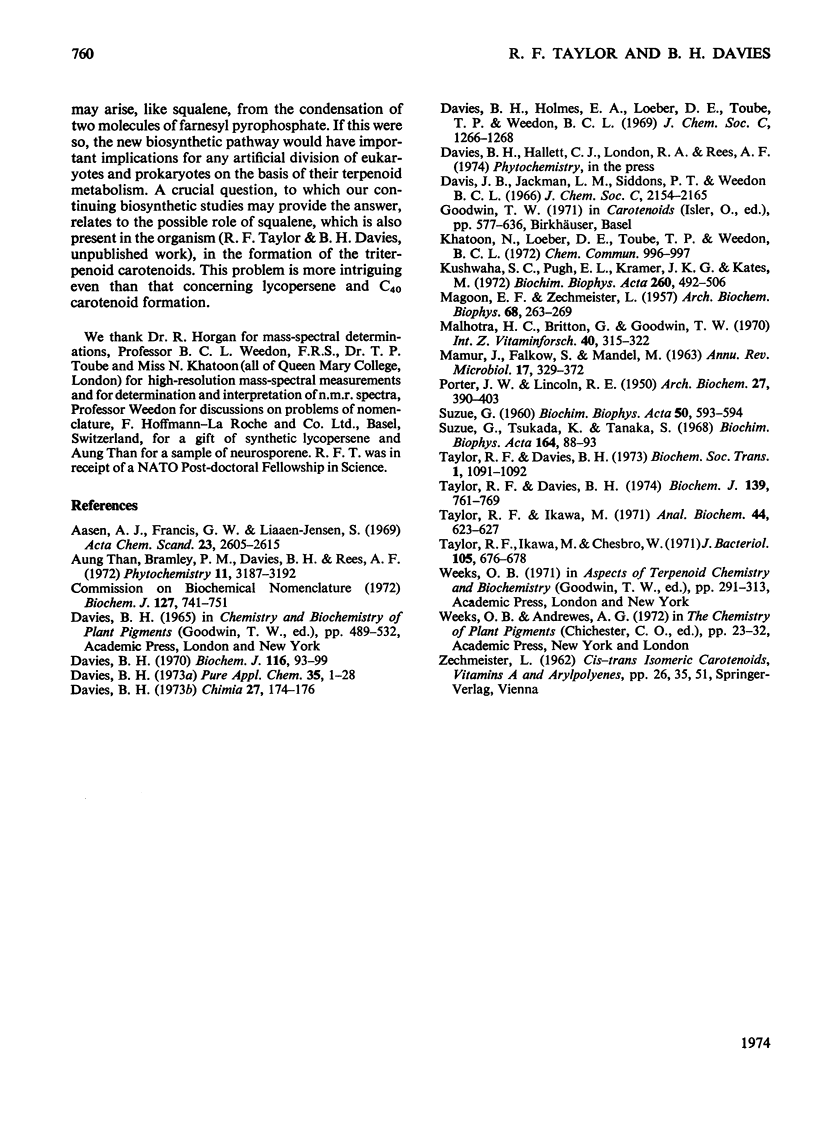
Selected References
These references are in PubMed. This may not be the complete list of references from this article.
- Davies B. H. A novel sequence for phytoene dehydrogenation in Rhodospirillum rubrum. Biochem J. 1970 Jan;116(1):93–99. doi: 10.1042/bj1160093. [DOI] [PMC free article] [PubMed] [Google Scholar]
- Davies B. H. Carotene biosynthesis in fungi. Pure Appl Chem. 1973;35(1):1–28. doi: 10.1351/pac197335010001. [DOI] [PubMed] [Google Scholar]
- Kushwaha S. C., Pugh E. L., Kramer J. K., Kates M. Isolation and identification of dehydrosqualene and C 40 -carotenoid pigments in Halobacterium cutirubrum. Biochim Biophys Acta. 1972 Mar 23;260(3):492–506. doi: 10.1016/0005-2760(72)90064-1. [DOI] [PubMed] [Google Scholar]
- MAGOON E. F., ZECHMEISTER L. On a cis-neurosporene ex Pyracantha and the in vitro; stereoisomerization of neurosporene. Arch Biochem Biophys. 1957 Jun;68(2):263–269. doi: 10.1016/0003-9861(57)90358-2. [DOI] [PubMed] [Google Scholar]
- MARMUR J., FALKOW S., MANDEL M. NEW APPROACHES TO BACTERIAL TAXONOMY. Annu Rev Microbiol. 1963;17:329–372. doi: 10.1146/annurev.mi.17.100163.001553. [DOI] [PubMed] [Google Scholar]
- Malhotra H. C., Britton G., Goodwin T. W. A novel series of 1,2-dihydro carotenoids. Int Z Vitaminforsch. 1970;40(3):315–322. [PubMed] [Google Scholar]
- PORTER J. W., LINCOLN R. E. Lycopersicon selections containing a high content of carotenes and colorless polyenes; the mechanism of carotene biosynthesis. Arch Biochem. 1950 Jul;27(2):390–403. [PubMed] [Google Scholar]
- Suzue G., Tsukada K., Tanaka S. Occurrence of dehydrosqualene (C30 phytoene) in Staphylococcus aureus. Biochim Biophys Acta. 1968 Sep 2;164(1):88–93. doi: 10.1016/0005-2760(68)90074-x. [DOI] [PubMed] [Google Scholar]
- Taylor R. F., Davies B. H. Triterpenoid carotenoids and related lipids. Triterpenoid monohydroxy- and monoglucosyloxy-carotenoids from Streptococcus faecium UNH 564P. Biochem J. 1974 Jun;139(3):761–769. doi: 10.1042/bj1390761. [DOI] [PMC free article] [PubMed] [Google Scholar]
- Taylor R. F., Ikawa M., Chesbro W. Carotenoids in yellow-pigmented enterococci. J Bacteriol. 1971 Feb;105(2):676–678. doi: 10.1128/jb.105.2.676-678.1971. [DOI] [PMC free article] [PubMed] [Google Scholar]
- Taylor R. F., Ikawa M. Gas chromatography of carotenoids. Anal Biochem. 1971 Dec;44(2):623–627. doi: 10.1016/0003-2697(71)90251-x. [DOI] [PubMed] [Google Scholar]


